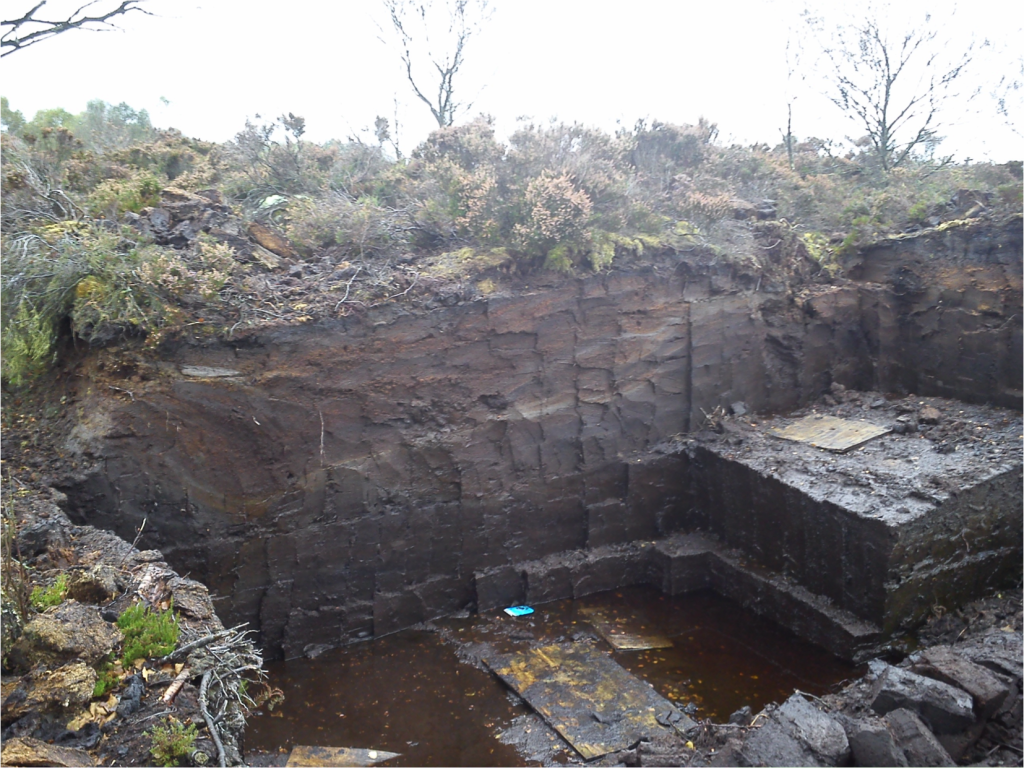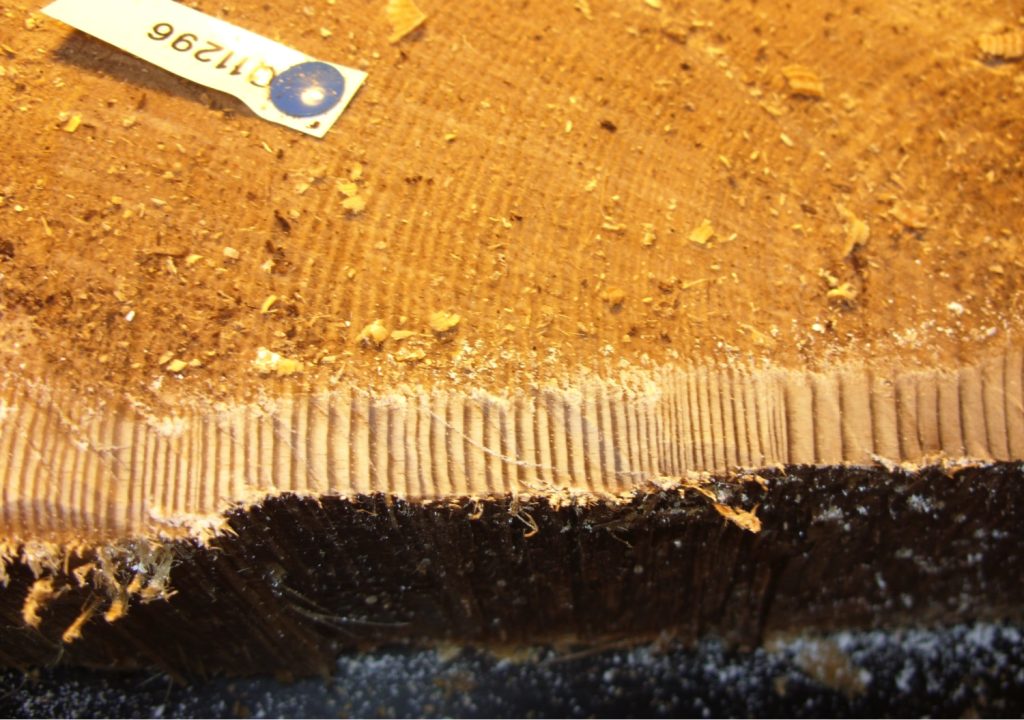Max is a PhD student in the Department of Geography, Environment and Society at the University of Minnesota. His research focuses on dendrochronology and paleoclimatology. He and his colleagues recently published a paper in Geology that can be found here. You can read more about his research here.
Some 12,000 years ago, the Emerald Isle was covered in a thick sheet of ice. As temperatures increased and Ireland once again thawed, the landscape was barren. Glacial moraines accumulated water and soon became home to the raised bogs that are now iconic for central Ireland. Today many of the bogs are no longer active due to artificial drainage and turf cutting, and the total hectare of raised bogs still in existence is dwindling. Nonetheless, these wetland environments continue to provide a habitat for ecosystems unique to the British Isles.

Figure 1. A horizontal cut feature at Sluggan Bog reveals layers of millennium-old peat (photo: Dr. Maarten Blaauw).
The surfaces of bogs may look rather spartan at first glance, but underneath lay incredible records of how the local environment has changed over time. The anaerobic conditions of peat bogs prohibit decay and help preserve organic matter, which has allowed palaeoecologists to collect material from flora that died several millennia ago (Figure 1). Among the plants are large stumps, and sometimes complete logs, of Scots pine (Pinus sylvestris) and English oak (Quercus robur). By studying the patterns of annual growth rings in these trees (Figure 2) it is possible to assign absolute calendric dates to every single ring, including establishment and death dates for each tree.

Figure 2. Annual growth rings are still present in this subfossil Scots pine specimen from a tree that died 8000 years ago.
In a study published in this month’s issue of Geology, we used material from three sites in central Northern Ireland (Torbenson et al., 2015). Around 8200 years ago Scots pine trees established themselves on the surfaces of these bogs in numbers greater than anything recorded in the region. Our interpretation of this pine horizon is that the wetlands were experiencing a rapid shift towards drier conditions. This period is contemporary with the most extreme cold event of the Holocene, the so-called 8.2 ka event (Rohling and Pälike, 2005), which was first identified in the Greenland ice cores. Climate model outputs and other proxy evidence suggest that there was a sharp decrease in precipitation over northwestern Europe during the 8.2 ka event and it is therefore likely that the pine horizon observed in the north of Ireland is a direct result of this large-scale atmospheric anomaly.
We know from previous research that over longer periods of time the currently accepted Greenland ice core chronology (GICC05) does not line up with the Antarctic ice cores (Veres et al., 2013). Similar concerns have been raised regarding the synchronicity of GICC05 and the radiocarbon calibration curve (Muscheler et al., 2014). Our high-precision date for the 8.2 ka event gives a rare opportunity to investigate this possible offset between what are arguably the most important timekeepers for the most recent 10,000 years, the ice core and radiocarbon chronologies. The earliest date for tree establishment on the bogs (8160 BP) does not overlap with the GICC05 date for the event (8244 ± 44 BP). Even with potential lag effects, the mean asynchrony for the early Holocene amounts to 60-70 years and our results are in line with previous studies that indicate that the Greenland ice core dates are overly old.
For many geologists, half a century here or there might seem of peripheral importance, perhaps even irrelevant. However, even such small differences in timing can have big impacts on our understanding of how climate and the environment have evolved over time and space. Paleoclimate proxy records inform and validate climate models that are used to project future changes our planet may experience. Only if we are confident in our chronologies can we compare such records and justify any conclusions about the impact of past climate variability.
References
![]() This work is licensed under a Creative Commons Attribution-NonCommercial-ShareAlike 4.0 International License.
This work is licensed under a Creative Commons Attribution-NonCommercial-ShareAlike 4.0 International License.
